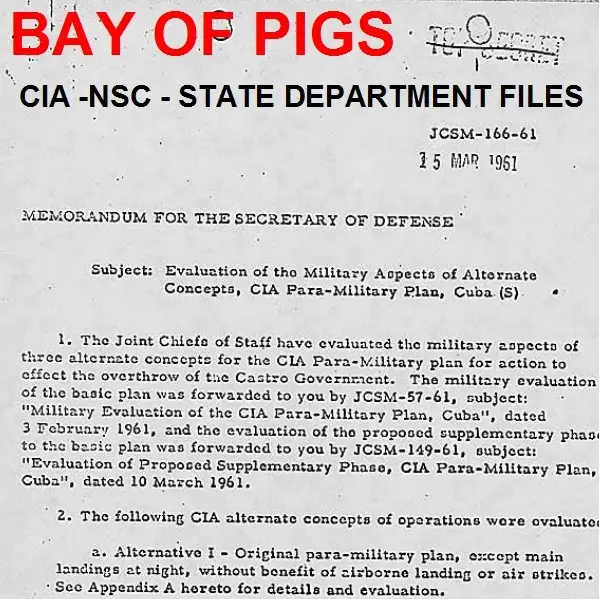

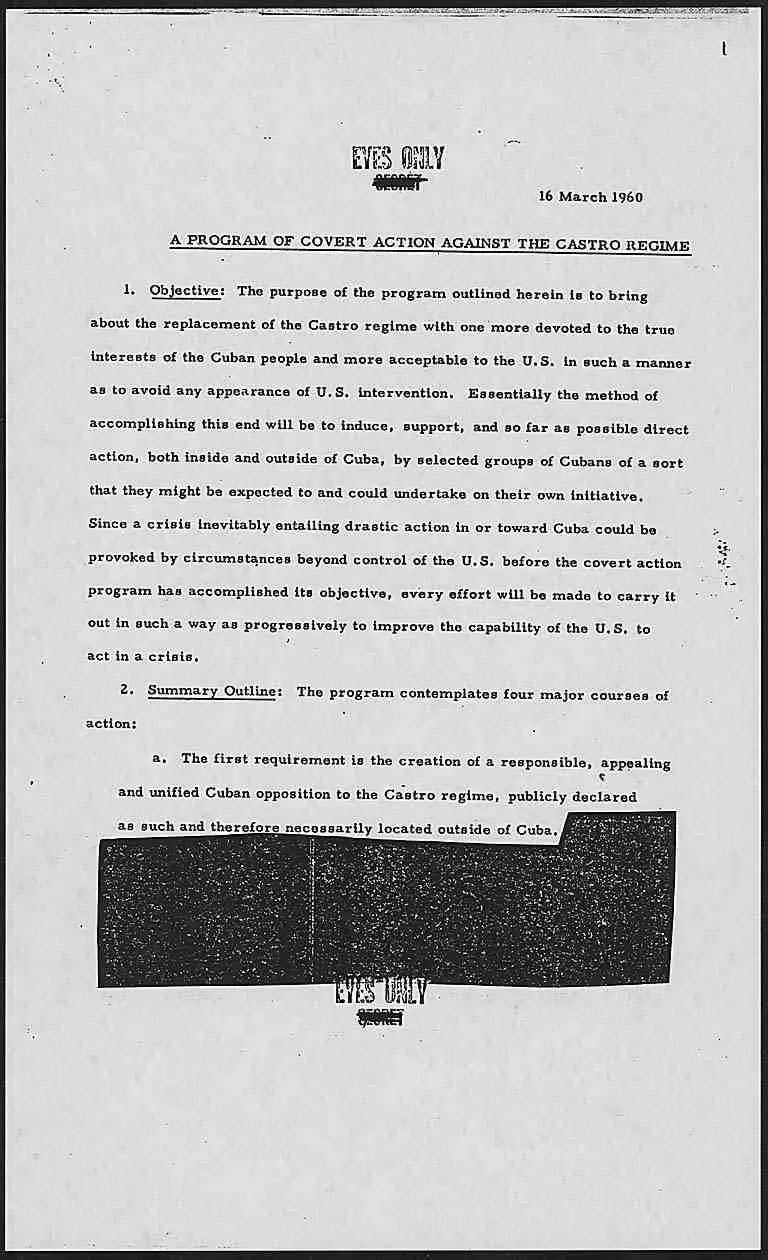
Bay of Pigs CIA – NSC – State Department Files
$19.50
Description
Bay of Pigs: Timeline and Key Figures
Timeline of Main Events (Based on Source):
- 1961:April: The Bay of Pigs invasion (“Operation Zapata”) occurs. Approximately 1,500 Cuban exiles land on the southwestern coast of Cuba (mostly at the Bay of Pigs).
- Immediately After Invasion: President Kennedy tasks General Maxwell Taylor to lead an inquiry into the government’s handling of the Bay of Pigs operation.
- 1961-1962: U.S. government actions and diplomatic activity responding to the Bay of Pigs invasion occur, as documented in the Foreign Relations of the United States series.
- 1961-1963: The Foreign Relations of the United States, Volume X, Cuba documents U.S. foreign policy decisions and diplomatic activities.
- Post-Invasion (Timeframe not fully specified):The Taylor Report evaluates the U.S. Government’s conduct of the entire operation.
- The CIA Inspector General produces a highly critical internal inquiry into the Bay of Pigs invasion.
- 1991: The CIA expands access to Department of State historians for high-level intelligence documents related to the Bay of Pigs.
- 1998: The CIA Inspector General’s report on the Bay of Pigs is declassified and released.
Cast of Characters (Based on Source):
- John F. Kennedy: President of the United States during the Bay of Pigs invasion. He authorized an inquiry into the operation after its failure.
- Robert F. Kennedy: Attorney General and member of the Taylor Commission investigating the Bay of Pigs.
- General Maxwell Taylor: Appointed by President Kennedy to head the main inquiry into the government’s handling of the Bay of Pigs. He chaired the Taylor Commission.
- Admiral Arleigh Burke: Member of the Taylor Commission.
- Allen Dulles: Director of the CIA during the Bay of Pigs invasion and a member of the Taylor Commission.
- Cuban Exiles: Approximately 1,500 Cuban exiles participated in the Bay of Pigs invasion (“Operation Zapata”).
- Dwight D. Eisenhower: References to the presidential papers in the Foreign Relations series suggest his involvement in the leadup to the Bay of Pigs planning.
- Lyndon B. Johnson: References to the presidential papers in the Foreign Relations series suggest his involvement in the aftermath of the Bay of Pigs planning.
Brief Bios:
- John F. Kennedy: 35th President of the United States (1961-1963). Faced with the Bay of Pigs invasion early in his presidency, he took responsibility for its failure.
- Robert F. Kennedy: U.S. Attorney General under his brother, President John F. Kennedy. He played a role in investigating the Bay of Pigs incident.
- General Maxwell Taylor: A prominent U.S. Army general. He led the Taylor Commission, which investigated the Bay of Pigs invasion and made recommendations for future operations.
- Admiral Arleigh Burke: A highly decorated U.S. Navy admiral and Chief of Naval Operations during the Eisenhower and Kennedy administrations.
- Allen Dulles: Director of Central Intelligence (DCI) from 1953 to 1961. He oversaw the CIA during the planning and execution of the Bay of Pigs invasion. His role in the operation was heavily scrutinized after its failure.
- Cuban Exiles: Anti-Castro Cubans who were trained and supported by the CIA to invade Cuba and overthrow Fidel Castro.
- Dwight D. Eisenhower: 34th President of the United States (1953-1961).
- Lyndon B. Johnson: 36th President of the United States (1963-1969).
Bay of Pigs CIA – NSC – State Department Files
These documents comprise 2,200 pages of records from the Central Intelligence Agency (CIA), the National Security Council (NSC), and the Department of State, all pertaining to the Bay of Pigs incident. The collection details “Operation Zapata,” a clandestine CIA mission in 1961 that involved deploying approximately 1,500 Cuban exiles to Cuba’s southwestern coast, primarily at the Bay of Pigs.
The CIA files encompass 570 pages related to the Bay of Pigs operation. Notably, they include a highly critical internal review conducted by the CIA Inspector General, spanning 450 pages in two volumes titled “The Inspector General’s Survey of the Cuban Operation.” This once highly classified assessment of the Bay of Pigs invasion was not declassified until 1998. Volume I contains the Inspector General’s report, while Volume II offers commentary on the report provided by the Directorate of Plans (DP), now known as the Directorate of Operations (DO). This compilation offers a unique perspective on the government’s internal evaluation of its handling of this historically significant and contentious event. The collection also contains National Security Council briefing notes and Intelligence Information Cables relevant to the Bay of Pigs.
The collection also includes files from the National Security Council regarding the operation. Following the Bay of Pigs incident, President Kennedy tasked General Maxwell Taylor with leading the primary investigation into the government’s management of the operation. The investigative body, led by General Taylor, was composed of Attorney General Robert Kennedy, Admiral Arleigh Burke, and CIA Director Allen Dulles, in addition to Taylor himself. The Taylor Report assessed how the US Government managed the overall operation. The related files contain supplementary materials for the Taylor Report (340 pages), General Taylor’s briefing documents for President Kennedy (60 pages), and meeting minutes from the Paramilitary Study Group regarding the Bay of Pigs (350 pages) across 23 sessions. The collection also encompasses memoranda pertaining to the planning and execution of the Bay of Pigs operation.
Additionally, the Department of State records include 815 pages of text from the Foreign Relations of the United States series, specifically Volume X, Cuba, 1961-1962, covering the period from January 1961 to September 1962. This series provides the official historical documentation of significant US foreign policy decisions and diplomatic actions. This particular volume documents the Bay of Pigs invasion of Cuba and the subsequent US strategies formulated in response to the failed invasion. The individuals responsible for compiling the Foreign Relations series were granted unrestricted access to all archived documents and files from the Department of State. Furthermore, these editors possess comprehensive access to the official papers of Presidents Kennedy, Johnson, and Eisenhower, along with other relevant White House documentation pertaining to foreign policy. The Presidential libraries house and safeguard presidential papers, which contain vital documentation related to foreign affairs originating from various federal entities such as the National Security Council, the Central Intelligence Agency, the Department of Defense, and the Joint Chiefs of Staff. Since 1991, the Central Intelligence Agency has broadened the scope of access for Department of State historians to high-level intelligence materials held within the Agency’s archives.
Related products
-
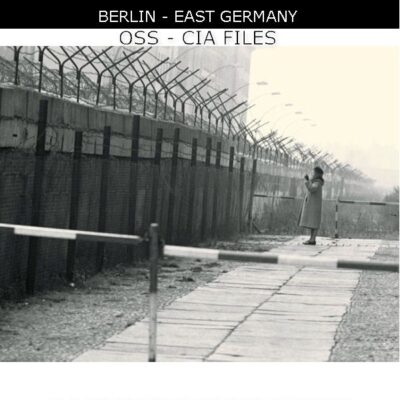
Berlin – East Germany CIA and OSS Files
$19.50 Add to Cart -
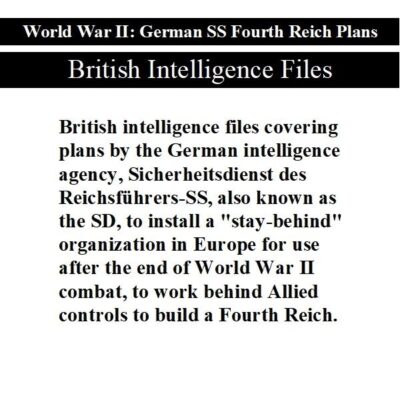
World War II: German SS Fourth Reich Plans – British Intelligence Files
$12.50 Add to Cart -
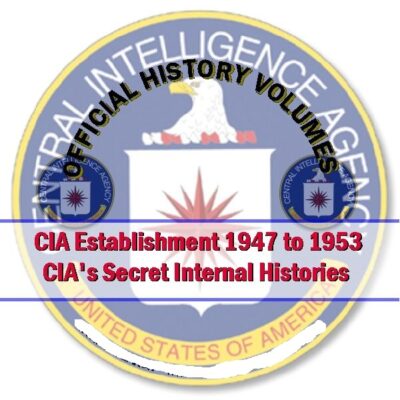
CIA Establishment 1947 to 1953 – CIA’s Secret Internal Histories
$19.50 Add to Cart -

Soviet Union Top Secret Military Journal Voyennaya Mysl
$19.50 Add to Cart